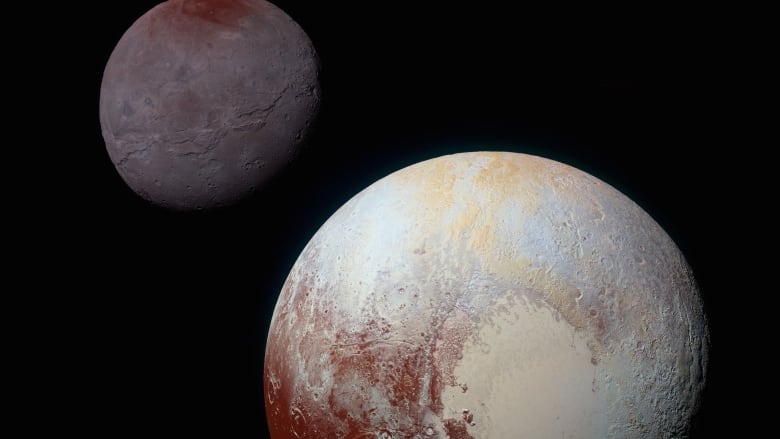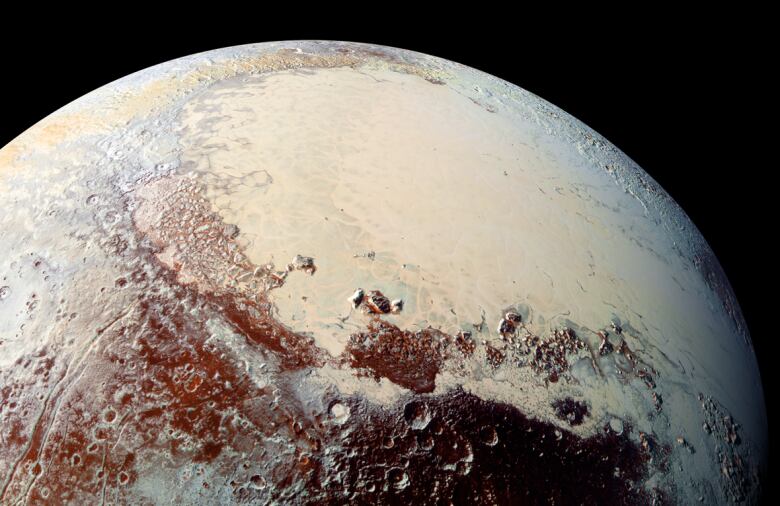Pluto may hold underground ocean
Evidence is mounting for an ocean at Pluto, buried beneath its frozen heart

Evidence is mounting for an ocean at Pluto, buried beneath its frozen heart.
Scientists said Wednesday that Pluto may have rolled over on its axis eons ago, the result of tidal forces with jumbo moon Charon. The extra weight of an underground sea is the most likely explanation, they said.
- Pluto once had underground ocean, windy weather, studies suggest
- Planet X? 9th planet, beyond Pluto, may exist, new study suggests
These latest findings are based on observations by NASA's New Horizons, which made an unprecedented flyby of Pluto last year. The spacecraft is now 563 million kilometres from Pluto and enroute to a 2019 close approach of another faraway orb.
Published in this week's journal Nature, the studies focus on a 965-kilometre basin in the left lobe of Pluto's heart-shaped region. This basin is known as Sputnik Planitia, named after the Russian satellite that launched the Space Age in 1957.
It's a big elliptical hole in the ground, so the extra weight must be hiding somewhere beneath the surface.And an ocean is a natural way to get that.- FrancisNimmo, University of California,Santa Cruz
Sputnik Planitia is aligned with Pluto's tidal axis, so much so that it's unlikely to be coincidence, according to the researchers. More likely, the nitrogen ice-coated basin has extra mass below the surface to cause Pluto to reorient itself and have Sputnik Planitia on the opposite side of the dwarf planet as Charon.
"It's a big elliptical hole in the ground, so the extra weight must be hiding somewhere beneath the surface. And an ocean is a natural way to get that," lead author Francis Nimmo of the University of California, Santa Cruz, said in a statement.
Nimmo suspects the ocean is primarily water with some ammonia or other "antifreeze" thrown in. Slow refreezing of this ocean would conceivably crack the planet's shell a scenario consistent with photos taken by New Horizons.

Subsurface oceans may also be on other similarly sized worlds orbiting in the Kuiper Belt, a so-called twilight zone on the fringes of our solar system, according to Nimmo.
"They may be equally interesting, not just frozen snowballs," he noted.
New Horizons is managed from Johns Hopkins University.
Close to the sun, meanwhile, Mercury has a big new valley. Scientists attribute surface buckling, caused by global contraction.
The valley is more than 965 kilometreslong, 402 kilometres wide and 3.2 kilometresdeep.
A research team led by Thomas Watters, a senior scientist at the Smithsonian Institution's National Air and Space Museum, discovered the valley from images taken by NASA's MESSENGERspacecraft. The spacecraft orbited Mercury for four years before crashing deliberately into the innermost planet last year.
Earth has experienced this type of buckling, involving both oceanic and continental plates, Watters said.
"But this may be the first evidence" of it on Mercury, he noted.
This Great Valley, as it's known, was revealed Wednesday. The study was published in Geophysical Research Letters, a journal of the American Geophysical Union.












_(720p).jpg)


 OFFICIAL HD MUSIC VIDEO.jpg)
.jpg)



























































































